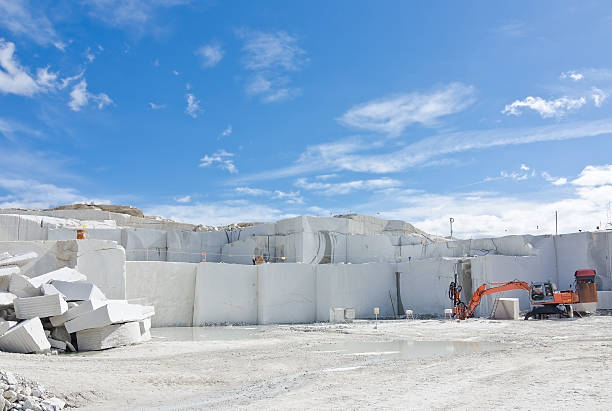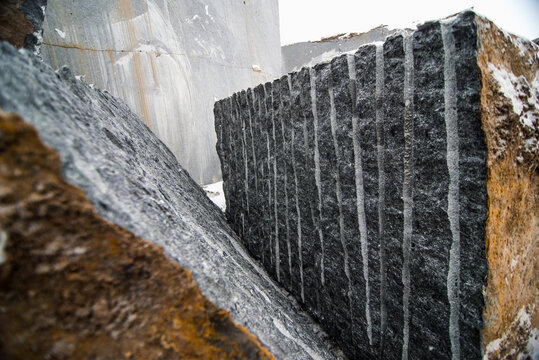Checking Out Granite Quarries in South Africa: A Comprehensive Overview
Checking Out Granite Quarries in South Africa: A Comprehensive Overview
Blog Article
Discovering the Rich Background and Sustainable Practices of Granite Quarrying
As we base on the precipice of discovering the complex tapestry of granite quarrying, a journey through time reveals not just the physical act of extracting stone yet also the social and historical importance woven into the really material of this technique. From the ancient beginnings that laid the structure for modern quarrying methods to the lasting practices that are forming the future of this sector, each chisel mark on granite surface areas narrates waiting to be discovered (granite quarries in south africa). The legacy of granite quarrying stretches much past plain extraction; it is a testimony to human resourcefulness, resilience, and the enduring allure of this marvelous rock
Old Origins of Granite Quarrying
Dating back to ancient worlds, the method of quarrying granite has actually been an integral component of human history and architectural development. The earliest proof of granite quarrying go back to old Egypt, where massive pyramids and intricate sculptures were crafted from this durable stone. The Egyptians used primitive tools to draw out granite blocks from quarries, showcasing the value of this product in their significant buildings.
Relocating ahead in history, the Greeks also made substantial payments to the quarrying of granite. The Greeks utilized granite in various building wonders, such as temples and statuaries, demonstrating their skill in shaping and sculpting this durable rock. The Romans better improved the techniques of quarrying granite, using advanced devices like knives and hammers to essence and shape granite for their legendary structures.
Via the centuries, the practice of quarrying granite has actually progressed, with contemporary innovations boosting performance while maintaining the classic allure of this natural rock - granite quarries in south africa. From old human beings to modern home builders, the tradition of granite quarrying proceeds to shape our world
Development of Quarrying Strategies
The advancement of quarrying strategies has been marked by a continual progression in the direction of higher effectiveness and accuracy in drawing out granite. From the simple techniques used by our ancestors to the advanced technologies utilized in modern quarrying operations, the industry has gone through considerable improvements. Early quarrying strategies entailed hands-on labor with fundamental tools such as chisels, hammers, and wedges to remove granite blocks from the earth. As worlds progressed, techniques like fire-setting and primitive explosives were presented to help with the removal process.
Developments in computer-controlled devices and 3D modeling have optimized quarrying procedures, leading to minimal ecological effect and boosted sustainability practices. As the demand for granite proceeds to increase, the advancement of quarrying methods continues to be essential to meeting market requires efficiently and sustainably.
Cultural Relevance of Granite
Granite holds a profound social significance throughout numerous civilizations due to its long-lasting visibility in architectural masterpieces and revered monoliths. From the stunning pyramids of Egypt to the detailed carvings of the Angkor Wat temple in Cambodia, granite has actually been a material of option for expressing majesty and longevity in cultural heritage. In old Rome, granite columns embellished temples and public structures, signifying strength and durability. The cultural relevance of granite prolongs beyond its physical qualities; it symbolizes resilience, security, and timelessness, making it an icon of withstanding legacies and practices.

Sustainable Practices in Quarrying
In the middle of the rich background of granite quarrying and its cultural importance lies a growing focus on lasting practices within the sector. As environmental recognition and issues about resource exhaustion have increased around the world, the quarrying market has actually significantly i was reading this embraced sustainable methods to lessen its impact on the atmosphere and surrounding areas.

In addition, recovery and rehabilitation of quarry websites post-extraction are integral to lasting methods. By recovering quarried locations to an all-natural or useful state, such as producing wildlife habitats or leisure spaces, quarriers can counter the ecological footprint of their procedures and contribute positively to the local ecosystem.
Legacy of Granite Quarrying
With a historic backdrop steeped in craftsmanship and commercial development, what sustaining influence has granite quarrying left on the landscape of contemporary society? The legacy of granite quarrying transcends mere removal techniques; it has actually formed building wonders, metropolitan landscapes, and cultural heritage worldwide. The sturdy nature of granite has actually made it a favored selection for monuments, structures, and facilities, standing as a testimony to the skill and creativity of quarry blog here workers throughout generations.
In go to my blog addition, the economic footprint of granite quarrying can not be overlooked. The industry remains to provide job opportunity and drive regional economic climates in areas where granite removal prevails. It has also spurred technological developments in quarrying methods and equipment, leading to a lot more effective and sustainable methods.
In terms of sustainability, the tradition of granite quarrying consists of initiatives to minimize environmental influences via recovery jobs and liable source management. By stabilizing economic rate of interests with environmental stewardship, the sector strives to make sure that future generations can remain to gain from this enduring natural resource.
Final Thought

Report this page